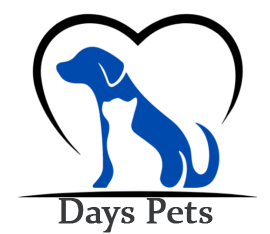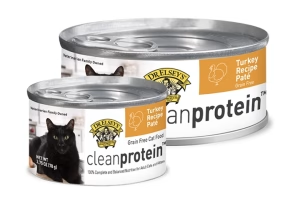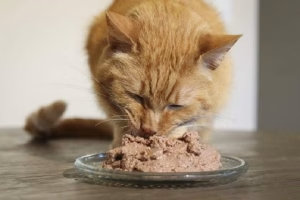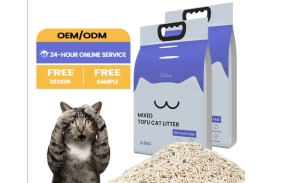Introduction
The pet food industry is in the midst of a remarkable transformation. As consumer expectations continue to rise, cat owners are seeking more than just a basic meal for their feline companions; they are demanding high-quality ingredients, targeted nutrition, and increasingly specialized flavors. This shift represents an enormous opportunity for wholesalers, retailers, and OEM/ODM clients to elevate their product lines with private label cat wet food. After all, developing a custom, premium cat wet food line can do more than just fill a shelf—it can forge deeper brand loyalty, differentiate your product offerings, and open the door to new customer segments who value quality, craftsmanship, and transparency.
In the global marketplace, brands are not merely competing on price anymore. According to industry insights, the global pet food market size was valued at approximately USD 110 billion in 2022, and is expected to continue growing at a CAGR of around 5% from 2023 to 2030, as noted by various market analyses [Source]. More specifically, the cat food segment is experiencing robust growth, fueled by rising global cat ownership. This surge means that now is the perfect time to consider private label cat wet food to expand your product line, take advantage of evolving consumer demands, and position your brand at the forefront of innovation.
Why Add Private Label Cat Wet Food to Your Product Line?
Meeting the Demand for Premium, Customized Options
Cat owners today seek more than generic kibble or economy-grade options. Many want recipes crafted with human-grade proteins, responsibly sourced ingredients, and balanced nutrition. The interest in grain-free formulas, limited-ingredient diets, and specific health-support claims (such as hairball control or urinary health) is growing at a notable pace. Offering a private label cat wet food line empowers you to tap directly into these trends, customizing formulations that align with your brand’s mission and customers’ desires.
By stepping beyond basic offerings, you can provide a truly unique product line that resonates with cat owners. Whether it’s a salmon entrée loaded with Omega-3 fatty acids or a turkey pâté enriched with added taurine, private label formulas let you tailor flavors and benefits. Such customization helps you stand out in crowded retail environments—both online and offline.
Enhancing Your Brand Perception
Expanding into private label cat wet food doesn’t just diversify your SKUs—it tells a story about your brand. Offering a carefully formulated, premium product line can convey that you genuinely care about animal welfare, nutritional excellence, and superior taste. This perception can make you a trusted name in an increasingly discerning marketplace.
In fact, by elevating your brand image, you can attract the type of loyal clientele who appreciate quality and are willing to pay a premium. In a segment where brand loyalty can translate into repeat purchases and positive word-of-mouth, this is invaluable.
Understanding Key Market Trends for Cat Wet Food
Before diving into custom formulations, it’s crucial to understand the current trends. Drawing insights from reputable market research groups can help you anticipate your customers’ needs and craft products that feel ahead of the curve.
Trend 1: Humanization of Pets
Today’s cat owners often treat their felines like family members. According to the 2023–2024 American Pet Products Association (APPA) National Pet Owners Survey, more than 70% of U.S. households now include a pet, and a growing portion of those pets are cats. Owners are willing to spend more on high-quality meals, even mirroring their own dietary choices.
As a result, you might consider highlighting human-grade ingredients, single-protein sources, and even “culinary-inspired” flavors. Options like “Chicken & Pumpkin Stew” or “Grilled Tuna with Sweet Potato” not only sound appealing but signal to the owner that you are using wholesome, premium ingredients.
Trend 2: Functional Ingredients for Specific Needs
Cats have unique nutritional requirements, and many consumers now look for products that address particular health concerns. For example:
Hairball Control: Fiber-rich formulations, often including pumpkin or psyllium, help with digestion and hairball prevention.
Urinary Tract Health: Controlled mineral levels, added cranberries, or ingredients promoting higher moisture intake can support urinary health.
Sensitive Digestion: Limited-ingredient or novel protein diets are popular among cats with food sensitivities or allergies.
Integrating these functional ingredients and health-support claims into your private label cat wet food line can set you apart from competitors and address a growing consumer demand.
Trend 3: Sustainability and Ethical Sourcing
Modern consumers are increasingly conscious of the environmental and ethical implications of their purchasing decisions. Ingredients that are sustainably sourced and manufacturing processes that prioritize animal welfare and eco-friendly measures resonate strongly. Highlighting responsibly harvested fish or ethically raised poultry can add value for your customers, attracting those who want to support brands that align with their values.
Custom Formulations: The Heart of a Successful Private Label Line
Crafting a winning product goes beyond just mixing ingredients. It requires a deep understanding of feline nutrition, market preferences, and manufacturing best practices. Working with a reputable pet treats manufacturer that offers OEM/ODM services can streamline the process from concept to shelf.
Key Considerations for Custom Cat Wet Food Formulations:
Protein Quality and Source:
Cats are obligate carnivores, meaning they thrive on high-quality animal protein. Consider premium proteins like deboned chicken, tuna loins, salmon fillets, and turkey breast. Differentiating on protein source—such as novel proteins like duck or venison—can make your product stand out.
Texture and Format:
Cats are notoriously picky about texture. While some cats love pâtés, others prefer chunks in gravy, and still others enjoy shredded textures. Offering multiple texture varieties can cater to diverse feline preferences.
Nutrient Balance:
Ensure that your recipes meet or exceed the standards set by the Association of American Feed Control Officials (AAFCO) or other relevant regulatory bodies. Adding essential nutrients like taurine, vitamins, and balanced minerals ensures cats receive complete nutrition.
Flavor Enhancements:
Cats have fewer taste buds than humans, but they are still sensitive to aroma and mouthfeel. High-quality fats and natural flavor enhancers, like bone broth or fish oils, can enhance palatability.
Free From Unnecessary Fillers:
Today’s consumers scrutinize ingredient lists. Avoiding artificial colors, flavors, and fillers can help position your brand as a natural, wholesome option.
How to Begin the Private Label Process
Launching a private label cat wet food line can seem complex if you’re new to it. However, partnering with experienced professionals can streamline every phase, from ingredient sourcing to packaging.
Step-by-Step Approach:
Market Research:
Start by understanding your target customer—are they premium buyers looking for organic, grain-free pâtés, or cost-conscious shoppers seeking a balance of value and quality? Examine what your competitors are doing and identify a unique selling proposition (USP).
Collaborate with a Reputable Pet Food Manufacturer:
Finding a trusted partner is pivotal. A good manufacturer provides guidance on formulations, packaging options, compliance, and production scheduling. For example, visiting matchwellpets.com can help you connect with seasoned experts who understand OEM/ODM needs and can meet rigorous quality standards.
Develop Custom Recipes:
Work closely with nutritionists and product developers to create flavors and textures that align with your brand identity. You can start small with a few signature recipes and then expand as demand grows.
Test, Refine, and Validate:
Before a full launch, conduct palatability tests, ensure that nutrient profiles meet AAFCO guidelines, and gather feedback from trusted cat-owning consumers. Make adjustments if needed, so you know your formula is dialed in perfectly.
Branding and Packaging:
Invest in packaging that reflects your brand’s story. Eco-friendly, eye-catching designs not only draw consumer attention but also signal that you’ve considered every detail, from product to presentation.
Launch and Gather Feedback:
Once on the market, monitor sales data, customer reviews, and retention rates. Use this insight to refine your line, add new variants, or introduce limited-edition seasonal flavors that keep interest high.
Adding Private Label Cat Wet Food to an Existing Product Portfolio
If you already carry wholesale pet treats, wholesale dog treats, wholesale cat treats, or other pet products, integrating a private label cat wet food line can complement your existing categories. For example, if you offer wholesale dog treats or white label dog treats, expanding into the cat segment diversifies your revenue streams and reduces risk if demand in one area dips.
Synergies to Consider:
Cross-Promotions:
Bundle cat wet food with popular wholesale cat treats to create a full-meal experience. Offer discounts when customers purchase multiple products across categories.
Loyalty Programs:
If you have a loyalty club, introducing a premium cat wet food line can entice members to try something new. They trust your brand, so they’re more likely to experiment with a new product line.
Seasonal or Limited-Edition Products:
Incorporate festive flavors during holidays—like a “Holiday Turkey & Cranberry Entrée”—to captivate consumers. This approach keeps your product line fresh and encourages repeat visits.
The Financial Upside of Customizing Your Own Private Label Cat Wet Food
It’s not just about improving brand perception—there’s a strong financial incentive to consider. Private label products often provide higher margins than national brands, and controlling the formulation allows you to manage ingredient costs and pricing strategies more effectively. By closely aligning your product with consumer trends, you can enjoy a higher willingness-to-pay and stronger brand loyalty. This combination often leads to improved long-term profitability.
Additionally, owning your private label line reduces reliance on external suppliers or fluctuating third-party market conditions. You gain control over inventory management, packaging changes, and recipe updates, enabling you to respond quickly to market shifts.
Quality and Compliance: Non-Negotiable Essentials
While creativity and innovation are exciting, never lose sight of the importance of quality assurance and compliance. Regulators like the U.S. Food and Drug Administration (FDA) and bodies governing pet food labeling and safety standards play an essential role.
Key Quality and Compliance Measures:
Adhering to AAFCO Nutritional Profiles:
Ensure your cat wet food meets the nutritional requirements established for growth, maintenance, or all life stages. This helps consumers trust your product’s nutritional claims.
Stringent Quality Control:
Choose manufacturing partners who follow Good Manufacturing Practices (GMP) and have Hazard Analysis and Critical Control Points (HACCP) plans in place. This ensures contaminants, pathogens, and quality issues are proactively managed
Transparent Labeling:
Provide clear, accurate ingredient lists and guaranteed analysis. Consumers appreciate transparency—honesty fosters trust and builds brand loyalty.
Sustainable Packaging and Responsibly Sourced Ingredients:
Highlighting these aspects can address the growing consumer concerns around the ethics and sustainability of the pet food industry. It can be a key differentiator in a crowded field.
Real-Time Data: Market Growth and Consumer Preferences (2024 Insights)
As of 2024, the global cat food segment continues to grow. Real-time data from market research firms like Euromonitor International and Grand View Research indicates that the premium cat food category, including wet food, is outpacing the growth of traditional mass-market options. Meanwhile, e-commerce sales are surging, with online channels capturing an increasing share of total cat food sales. This means that positioning your private label cat wet food for online availability—whether via Amazon, large supermarket websites, or specialty pet e-retailers—can connect you with customers actively seeking out new, premium brands.
Additionally, consumer surveys show that flavor variety and quality ingredients rank at the top of buying considerations for cat owners. Transparency about sourcing and nutrient content is also becoming crucial. This data suggests that brands offering private label cat wet food with traceable ingredients, appealing textures, and meaningful nutritional benefits will win over discerning buyers.
Building Long-Term Relationships with OEM/ODM Services
As a business decision-maker, you’re not simply looking for a one-off product solution; you want a reliable, long-term partner who can support product innovation and growth. Selecting an OEM/ODM partner that specializes in private label pet treats and is well-versed in cat wet food production can help you maintain a pipeline of cutting-edge products. Regular collaboration allows you to rapidly respond to new trends—like novel proteins, rotating seasonal ingredients, or unexpected health concerns—without having to reinvent your supply chain each time.
This level of agility can future-proof your brand. Rather than reacting to the market, you’ll be proactively pushing it forward, consistently delivering fresh experiences that satisfy even the pickiest felines and their devoted owners.
Avoiding Overt Marketing While Still Informing Readers
While the core purpose of this content is to inspire readers to consider adding private label cat wet food to their product line, it’s also important to keep the tone genuine and helpful. By focusing on real industry data, best practices, and transparent guidance, you’ll offer genuine value. Readers should leave feeling more knowledgeable, empowered, and excited about the possibilities of expanding their product portfolio, rather than feeling like they’ve endured a sales pitch.
Your expertise, reinforced by credible data and thoughtful insights, ensures readers trust the perspective shared. This trust encourages them to explore partnerships or solutions—like those offered at matchwellpets.com—organically and willingly, rather than due to aggressive marketing tactics.
Conclusion
The cat wet food category is more than a complementary addition to your product line—it’s a gateway to innovation, brand elevation, and enhanced customer loyalty. In today’s competitive market, offering unique, nutritious, and ethically produced formulations can ensure your brand stands out. By capitalizing on evolving trends, incorporating functional health benefits, and working closely with experienced pet product partners, you can create a private label cat wet food line that resonates with both feline palates and human values.
As demand for premium pet nutrition continues to rise, taking the leap into private label cat wet food might just be the strategic move that propels your brand into a new era of success. Whether you’re a wholesaler, retailer, or OEM/ODM client, there’s no better time to invest in quality, customization, and long-term relationships that drive value for your customers and, ultimately, for your brand.




